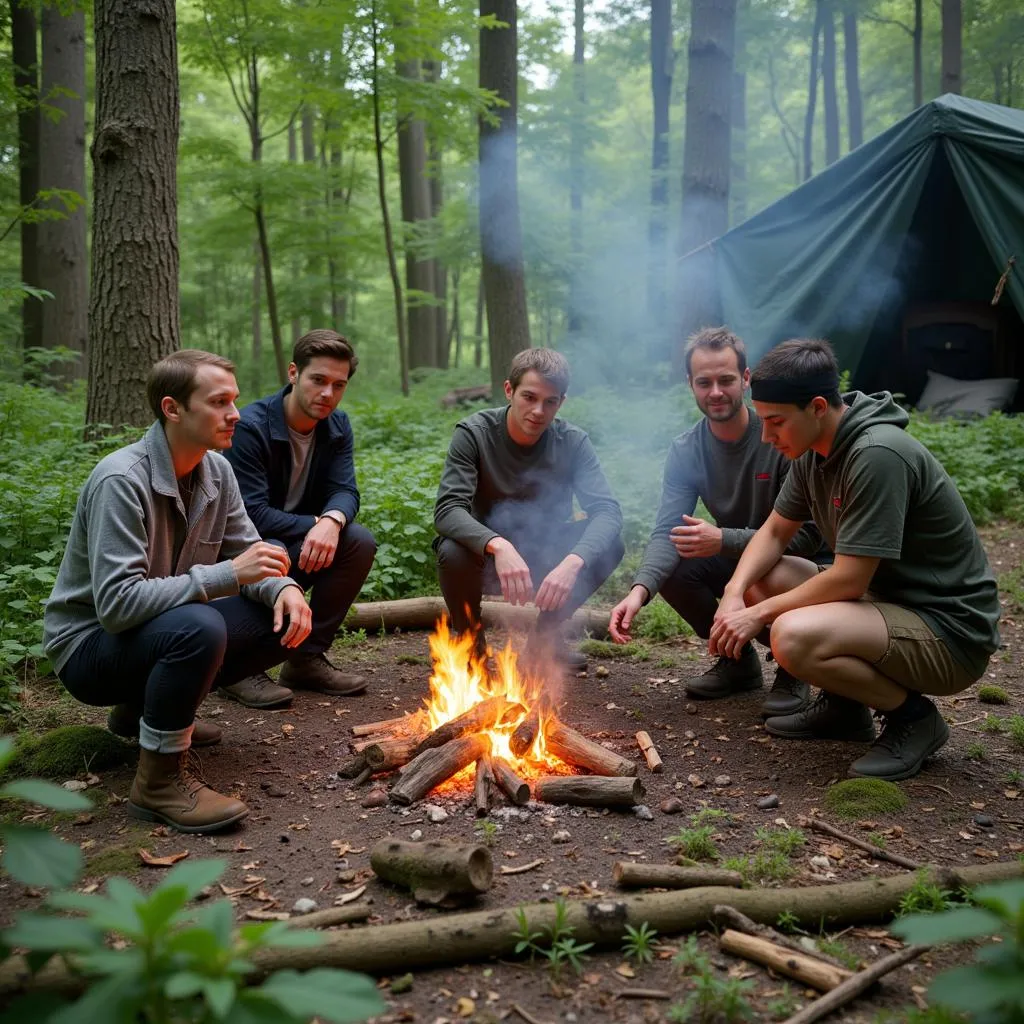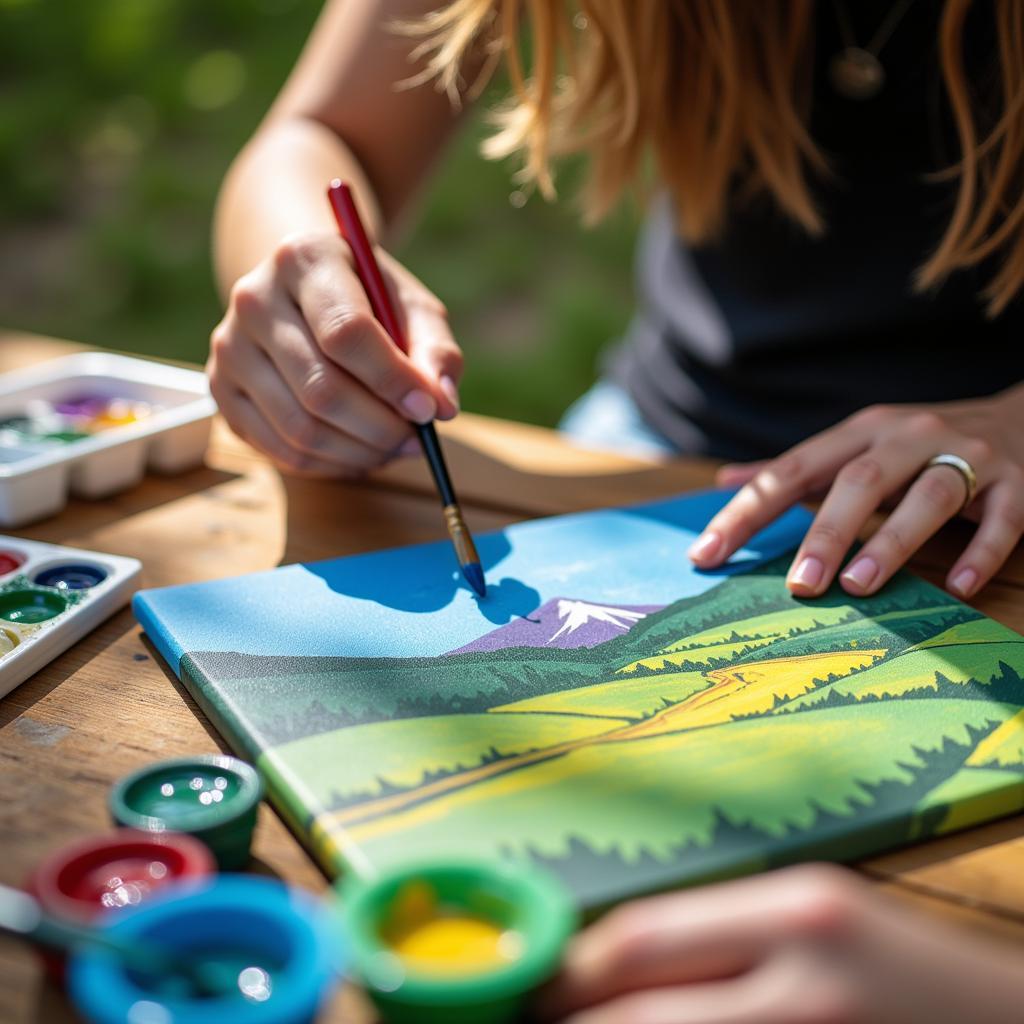The Art of Bushcraft: A Guide to Living Off the Land
Bushcraft is a fascinating and challenging skill that involves living off the land using traditional skills and techniques. It’s about connecting with nature, learning to survive and thrive in the wilderness, and appreciating the beauty and power of the natural world. Whether you’re a seasoned outdoor enthusiast or simply curious about this ancient art, delving into the world of bushcraft can unlock a sense of self-reliance, resourcefulness, and appreciation for the skills passed down through generations.
Understanding the Essence of Bushcraft
At its core, bushcraft is more than just surviving in the wild; it’s a way of life. It’s about learning to use the resources around you to build shelter, make fire, find food, and navigate your surroundings. It emphasizes self-sufficiency and a deep understanding of the natural world.
Essential Skills for Bushcraft Mastery
Shelter Building: A Haven in the Wilderness
One of the most fundamental aspects of bushcraft is shelter building. It’s about creating a safe and comfortable space to protect yourself from the elements. The techniques used vary depending on the available resources and the environment. Common methods include:
- Lean-to shelters: These simple structures use natural materials like branches and leaves, leaning against a tree or a rock face for support.
- Debris shelters: Constructed using fallen branches, logs, and other natural debris, these shelters provide basic protection.
- Tarp shelters: Using a tarp as a base, you can create a variety of shelters depending on your skill level and the available resources.
Firecraft: The Heart of Bushcraft
Fire is essential for warmth, cooking, and signaling in the wilderness. Learning how to make fire with traditional methods, without the use of modern equipment, is a key bushcraft skill. Here are some common fire starting techniques:
- Hand drill: This method involves rubbing a stick rapidly against a wooden board to create friction and generate heat.
- Bow drill: A more efficient version of the hand drill, it utilizes a bow to rotate the spindle faster, creating more friction.
- Flint and steel: This method involves striking a piece of flint with a steel to produce sparks that ignite tinder.
Wild Edibles: Nature’s Pantry
Learning to identify and forage edible plants is a crucial aspect of bushcraft. It allows you to supplement your food supply and gain a deeper understanding of the natural world.
- Plant identification: Before foraging, it’s essential to learn how to distinguish edible plants from poisonous ones. Consulting field guides and learning from experienced foragers is crucial.
- Harvesting techniques: Understanding the correct methods for harvesting wild plants ensures sustainability and preserves the ecosystem.
Navigation: Finding Your Way in the Wilderness
Navigating the wilderness without modern devices like GPS or maps requires a combination of traditional methods. These include:
- Using the sun and stars: Understanding celestial navigation allows you to orient yourself based on the position of the sun and stars.
- Reading the terrain: Paying attention to natural landmarks, like rivers, mountains, and valleys, can help you navigate.
- Using a compass: A compass is a valuable tool for bushcraft navigation, allowing you to determine cardinal directions.
The Benefits of Embracing Bushcraft
Bushcraft is more than just a survival skill; it’s an opportunity to experience a different way of life. Embracing this ancient art brings numerous benefits, including:
- Self-reliance: Learning bushcraft skills cultivates a sense of self-sufficiency and empowers you to rely on yourself in challenging situations.
- Nature connection: Spending time in nature and learning about the ecosystem fosters a deeper appreciation and respect for the natural world.
- Physical and mental well-being: Bushcraft activities are physically demanding, offering a healthy outlet for stress relief and improving overall fitness.
- Personal growth: Mastering bushcraft skills requires patience, perseverance, and problem-solving abilities, leading to personal growth and development.
Embark on Your Bushcraft Journey
If you’re intrigued by The Art Of Bushcraft, the journey begins with a willingness to learn and explore. There are countless resources available to help you on your path, including:
- Books and online courses: There are many excellent books and online courses covering various aspects of bushcraft.
- Workshops and classes: Participating in workshops and classes provides hands-on experience and guidance from experienced instructors.
- Local groups and communities: Joining local bushcraft groups and communities offers a supportive environment to learn from experienced enthusiasts.
Remember, bushcraft is a continuous journey of learning and exploration. It’s about embracing the process and appreciating the beauty and challenges of living off the land.
 Essential Bushcraft Survival Skills
Essential Bushcraft Survival Skills
FAQs:
- What are the essential tools for bushcraft? A basic bushcraft kit typically includes a knife, axe, fire starter, compass, map, first-aid kit, and shelter material.
- Where can I learn more about bushcraft? There are many online resources, books, and local groups that offer information and instruction on bushcraft.
- Is bushcraft dangerous? Like any outdoor activity, bushcraft carries inherent risks. It’s crucial to learn proper safety procedures and take necessary precautions.
- What are some good books on bushcraft? Some recommended books include “Bushcraft 101” by Dave Canterbury, “The Complete Bushcraft Handbook” by Richard Graves, and “The SAS Survival Handbook” by John “Lofty” Wiseman.
Let’s Connect!
Ready to embark on your own bushcraft adventure?
For further assistance, feel free to contact us at:
- Telephone: 02462573573
- Email: danteum@gmail.com
- Address: Savico Megamall, 7-9 Đ. Nguyễn Văn Linh, Gia Thụy, Long Biên, Hà Nội 10000, Việt Nam
We are here to provide support and guidance on your bushcraft journey.



